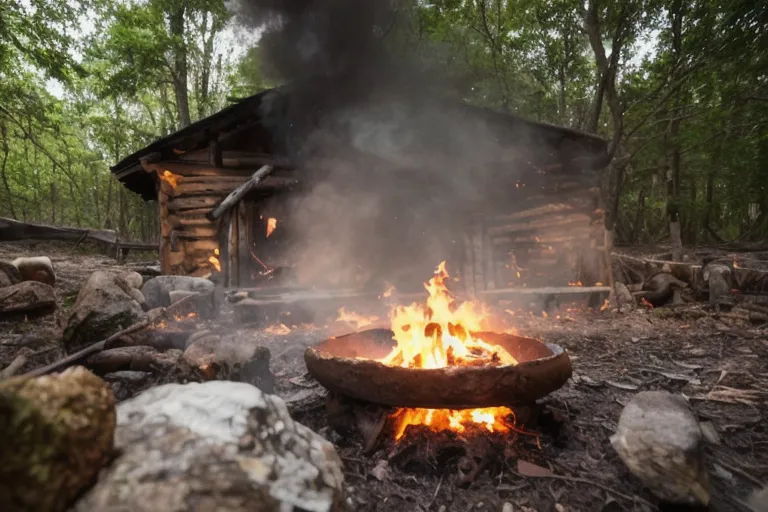Let's delve into the ancient and critical survival skill of fire starting.
The Hand Drill Method: The Essence of Primitive Fire Making
The hand drill method is as ancient as it is effective. This technique encompasses using a spindle and a hearth board, spinning the spindle between your palms to generate enough friction to create an ember.
Select a dry and soft wood for your spindle and hearth board, such as willow or juniper.
Carve a notch into your hearth board and place a leaf or bark below to catch the ember.
Use a steady back-and-forth motion to spin the spindle and apply downward pressure.
The hand drill is labor-intensive, requiring skill and endurance, but it connects us to our ancestors in a visceral way. For in-depth guidance, explore our Ultimate Guide to Wilderness Survival Skills
The Bow Drill Technique: Friction-Fueled Fire Creation
The bow drill is another friction method but uses mechanical advantage for efficiency.
Craft a bow from a robust, curved branch and a sturdy cord.
Use a top-handhold to stabilize the spindle and saw the bow back and forth.
Gather a tinder bundle of dry grass, pine needles, or leaves to nurse the ember into flame.
The bow drill lessens the physical strain compared to the hand drill.
The Fire Plow Method: A Friction-Based Trail to Ignition
The fire plow, while not as commonly used, offers another friction-based solution.
Carve a groove in the hearth board, using a hardwood plow stick to run up and down the groove rapidly.
Apply pressure and speed up as you see smoke, capturing the ember with your tinder nest.
This method can be physically demanding, so ensure you have a detailed understanding before attempting.
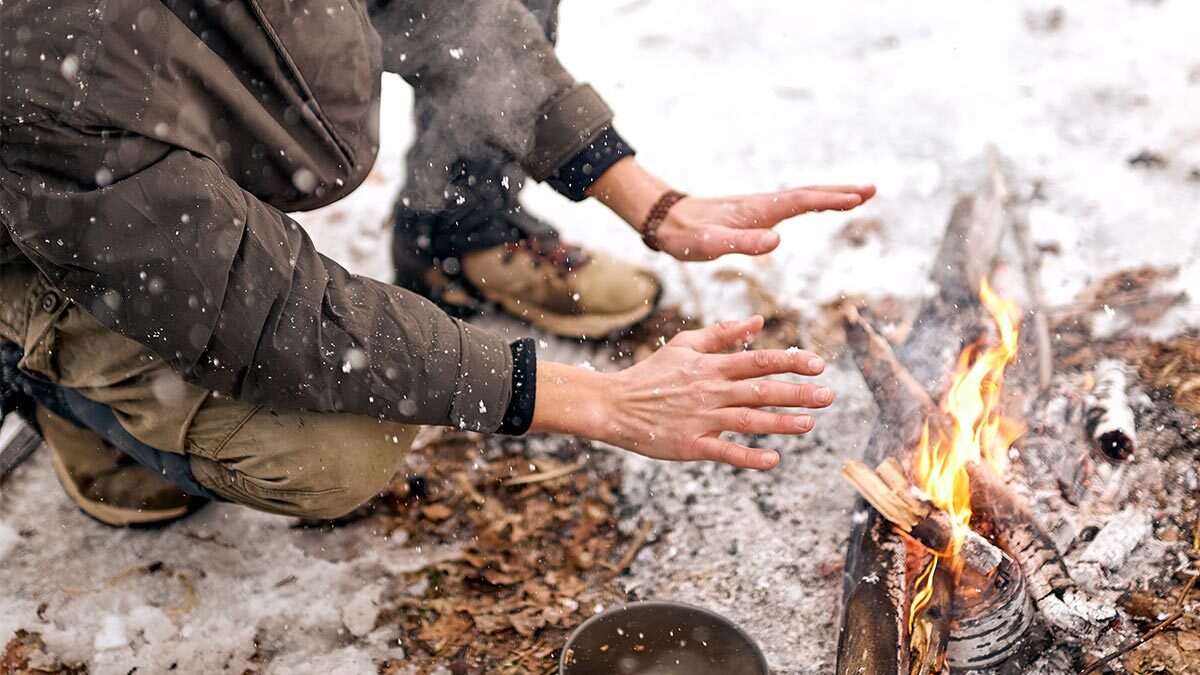
Modern Fire Starters: The Convergence of Technology and Technique
In our modern era, we have an array of tools at our disposal:
Ferro Rod and Steel: Striking a ferro rod with the back of your knife blade creates a shower of sparks, capable of igniting tinder.
Fire Pistons: A rapid compression of air ignites a small piece of tinder fungus or char cloth within the piston chamber.
Flint and Steel: Traditional yet effective, striking these materials together produces sparks to ignite char cloth or tinder.
For a complete guide on essential gear, check out my Essential Survival Gear Checklist.
Crafting the Perfect Tinder Bundle
The tinder bundle is your foundation, the bedrock upon which your fire will grow.
Use dry and fluffy materials like cattail fluff or shredded bark.
A mixture of different textures can facilitate better airflow and ignition.
Keep your tinder dry at all costs. Protect it with your body if needed.
Discover more about identifying and using natural resources with Edible Plants in the Wild and Edible Weeds guides on my website.

Unveiling the Secrets of Char Cloth: Ultimate Tinder for the Survivalist
Char cloth is a staple in any survivalist's fire-making kit. This carbonized material is created by slowly charring natural fabric, typically cotton, in an environment absent of oxygen. To craft your own char cloth:
Place a small piece of cotton cloth into a metal container with a tight-fitting lid.
Make a small hole in the lid to allow smoke to escape and prevent oxygen from entering.
Heat the container over a fire until the smoking ceases, then remove and cool.
When struck with a spark from flint and steel or a ferro rod, char cloth catches easily, providing a reliable ember. Explore the creation and use of char cloth on my Wilderness Survival: Unlocking Secrets page.
The Intricacies of the Fire Piston: A Modern Take on an Ancient Concept
The fire piston is a marvel of ingenuity, utilizing the principles of rapid air compression to ignite a piece of tinder fungus or char cloth. This method echoes the diesel engine's ignition system, showcasing how ancient methods can evolve into modern innovations.
Insert the tinder into the piston's recess.
Slam the piston into the cylinder and immediately withdraw it.
The resulting ember will glow, ready to transfer to your tinder bundle.
Grasping the science and the history behind the fire piston adds depth to our understanding of fire making. For an in-depth exploration, visit my Primitive Camping Across America feature.
Fire Steel and Flint: A Combination Forged in History
When speaking of fire steel, we often refer to a hardened piece of high-carbon steel, which, when struck against flint, yields a cascade of sparks. This is a skill that requires practice to master:
Angle the steel to direct sparks into your char cloth or tinder fungus.
Use a sharp downward strike to maximize spark production.
Hold your tinder close to the strike zone to quickly catch an ember.
Inside my Essential Wilderness Survival Skills page, you'll find elaborate techniques to utilize fire steel and flint effectively here.
Pump Drill: The Evolution of Fire by Friction
The pump drill adds a vertical spin to the friction technique, utilizing a cross piece and a weighted flywheel to maintain momentum. This less commonly used method provides a consistent speed and pressure that is essential for creating embers:
Assemble a spindle with a flywheel at its center and a cross piece at the top.
Thread a cord through the cross piece attached to a pump handle.
Use an up and down pumping motion to spin the spindle against the hearth board.
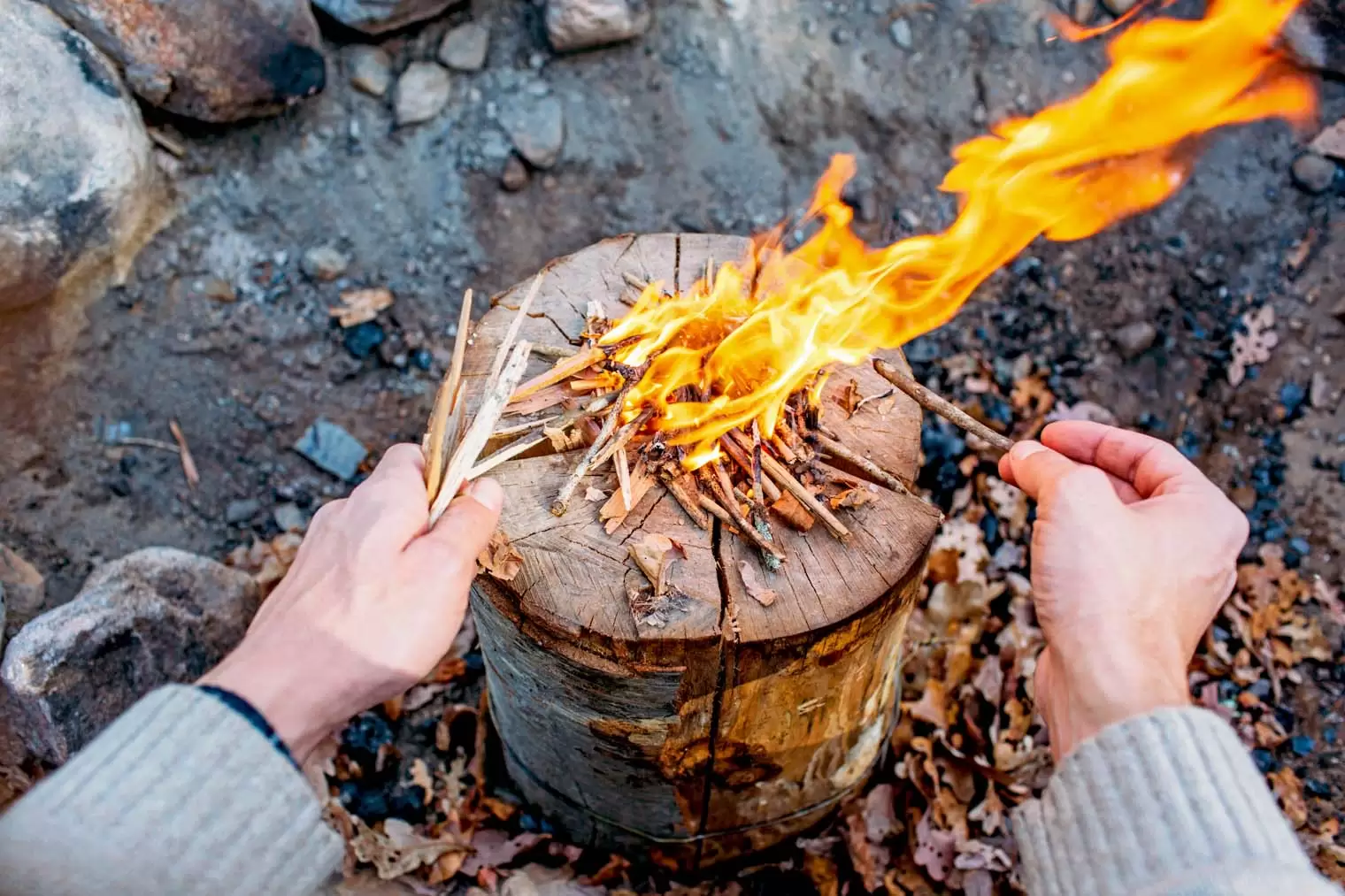
Steel Wool and Battery: A Surprising Spark in Survival Situations
In a pinch, steel wool and a battery can become a life-saving duo. The fine filaments of the steel wool ignite with ease when introduced to an electrical current:
Stretch out a piece of fine steel wool to increase its surface area.
Press the ends against the terminals of a battery to create a short circuit.
Once the steel wool begins to glow, transfer it to your tinder nest.
This method exemplifies the innovative spirit of survivalism and how everyday items can be repurposed in emergencies.
The Subtleties of Kindling: From Ember to Flame
Kindling is the intermediary between a glowing ember and a stable fire. It consists of small, dry sticks and wood pieces that catch fire easily but burn longer than tinder, thus building the bridge to larger fuel. The key to selecting kindling:
Choose pieces ranging from the thickness of a matchstick to that of a pencil.
Ensure the kindling is void of moisture and snaps crisply.
Gradually increase the size of the kindling as the fire intensifies.
For more nuanced details on fire maintenance, refer to my Wilderness First Aid: Vital Strategies for survival scenarios here.
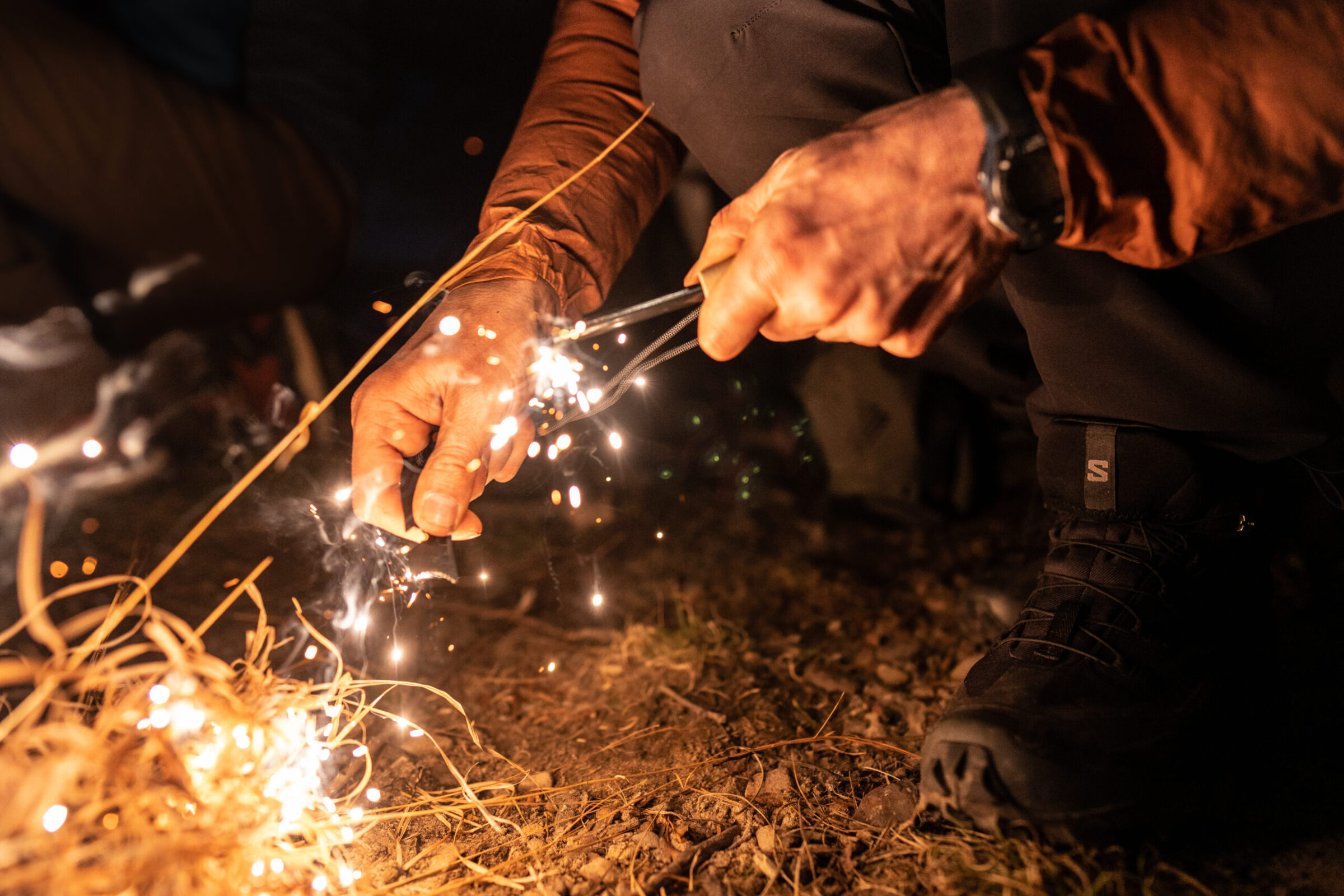
Harnessing the Power of Tinder Fungus: Nature's Fire Aid
Tinder fungus, also known as chaga among other names, is a resourceful natural tinder that has been utilized for centuries. Found on the bark of birch trees, this fungus is a survivalist's ally thanks to its ability to catch and hold an ember.
Harvest tinder fungus carefully without damaging the tree.
Dry it thoroughly before use to ensure it is ready to catch a spark.
Ember from tinder fungus can last for hours, making it an excellent fire carrier.
Incorporate this natural tinder into your fire-making repertoire by visiting my Wilderness Survival Gear resources here.
The Melted Wax Technique: Enhancing Your Tinder's Flammability
Surprisingly, common items like candles can be repurposed in survival scenarios. Melted wax can be used to treat your tinder, making it more combustible and water-resistant.
Collect dry kindling and tinder.
Drip melted wax over the materials to create a moisture barrier.
Store your wax-treated tinder for when you need a quick and reliable fire start.
For more tips on innovative fire-making enhancements, explore my comprehensive Outdoor Survival Techniques: Ultimate Guide here.
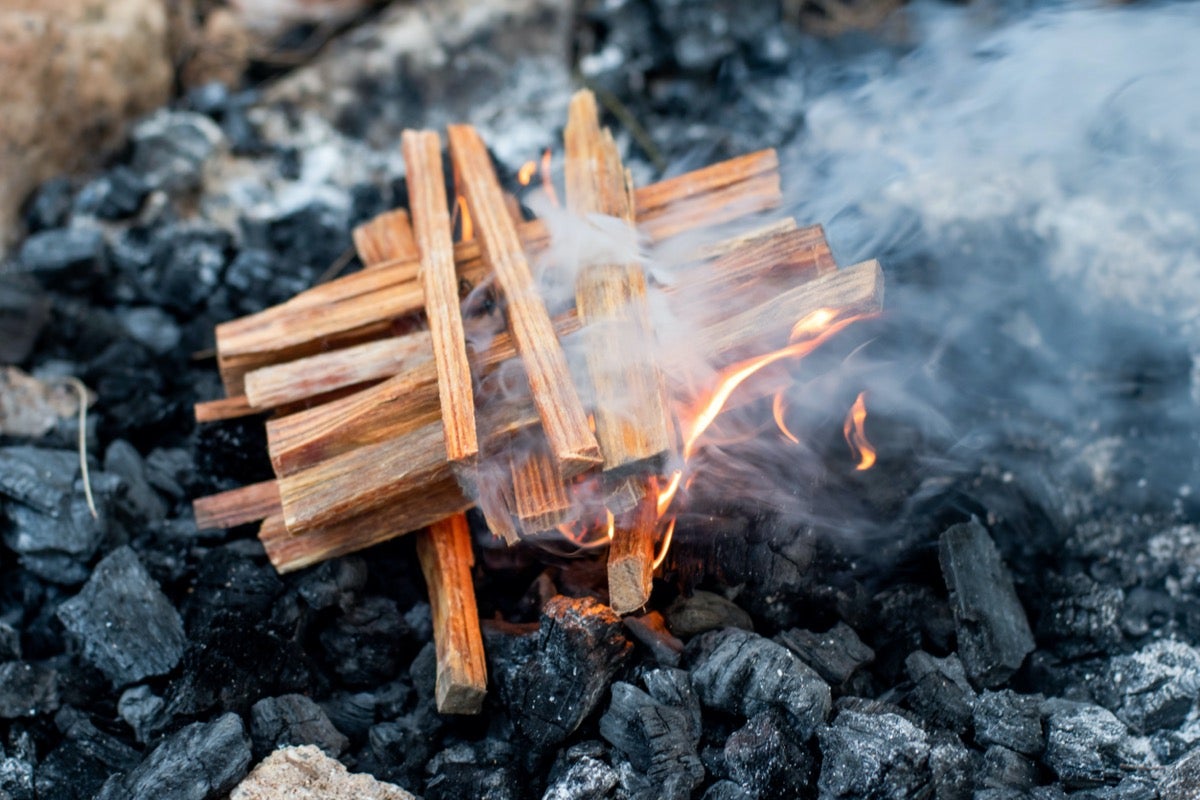
Crafting the Hearth Board: A Fundamental Component in Friction Fire Starting
The hearth board is critical in friction fire starting methods like the hand drill and bow drill. It must be made of softer wood that can easily be ground into a fine powder by the spindle, which is necessary for ember formation.
Choose your wood carefully, with species like cedar, aspen, or pine being good choices.
The board should be flat and smooth to provide a stable base for your spindle.
Properly notch your hearth board to collect the wood dust that will become your ember.
Learn how to select and prepare the perfect hearth board in my detailed Bushcraft Skills Master's Ultimate Guide here.
Exploring the Versatility of Bark and Dry Leaves: Natural Elements for Fire Craft
Bark and dry leaves are abundant natural materials that can serve various purposes in fire making. Bark from trees like birch is excellent for catching sparks due to its rich oils, while dry leaves can be added to your tinder bundle for added volume.
Strip thin shavings of bark to use as an initial catch for your sparks.
Crumble dry leaves to mix with finer tinder, increasing your bundle's flammability.
For more information on how to utilize nature's offerings, delve into the Edible Plants in the Wild section of my survival collection here.
The Importance of Dry Tinder: Ensuring a Flame in Damp Conditions
Maintaining a supply of dry tinder is paramount, especially in challenging, moist environments. Success often hinges on the quality and dryness of your tinder material.
Always collect dry materials whenever possible, even if you don't plan to make a fire immediately.
Store your tinder in a dry place, such as a sealed plastic bag or waterproof container.
Body heat can be used to dry out damp tinder, so keep it close in cold or wet conditions.
For strategies on enduring and thriving in harsh environments, review my Winter Wilderness Skills guide here.
The Fire Stick: An Ancient Method Reimagined
The fire stick is a tool often associated with indigenous cultures, used to not only start a fire but carry it. The principle is simple: a stick is whittled and treated so it can be lit and remain smoldering for an extended period.
Choose a dense wood that burns slowly and can maintain an ember.
Carve it in a way that maximizes surface area without sacrificing structural integrity.
Once ignited, the fire stick can be used to light other fires, making it an excellent tool for nomadic survival.

The Role of Pine Needles and Dry Wood in Firecraft
Pine needles and dry wood are essentials for building a successful fire. Rich in resins and oils, pine needles catch fire quickly, while dry wood is the backbone of sustainable fire.
Gather fallen pine needles in large quantities as they burn fast.
Select dry wood that has been seasoned and is free of moisture, ensuring a longer, hotter burn.
The Art of Fire Making and Survival Wisdom
Fire starting is not merely about the mechanics; it is about understanding the environment, the materials, and the primal connection that fire has to life itself. The key is to practice these techniques, master the skill of patience, and respect the elements you are working with.
To further your survival knowledge, I encourage you to read up on my extensive collection of resources such as Outdoor Survival Techniques: Ultimate Guide and Winter Wilderness Skills: Building an Igloo and Snowshoeing Adventure.
Ignite your survival instincts and flourish even in the harshest conditions by harnessing the power of the flame. Remember, the ability to create fire could mean the difference between life and death in the wilderness.
Stay safe, stay prepared, and let the primal art of fire-making guide your path to survival mastery.
